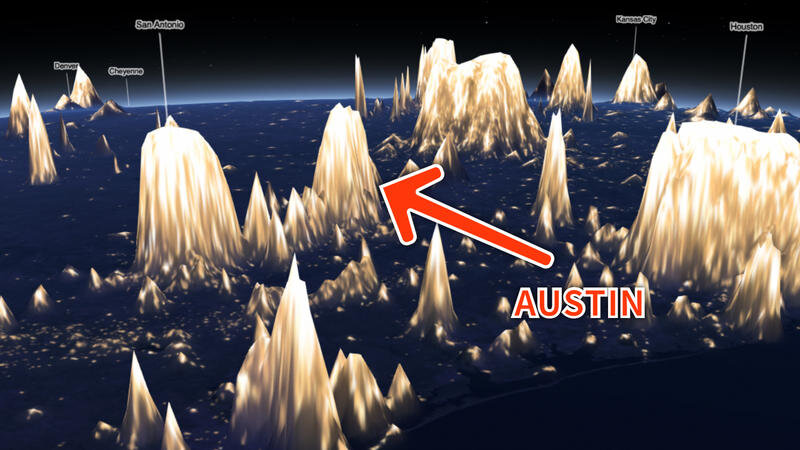
NEWS & INFORMATION

This Map Shows an Unlikely Source of America's Light Pollution
The map was created by subtracting population from light output, which highlights areas that throw off more light than predicted given their population density. It isn’t the glowing metropolitan centers of New York and Los Angeles that stand out, but regions like the oil-rich corner of South Dakota or the final leg of the Mississippi River. Some of the most prominent patterns on the map appear in regions where shale oil is being extracted.

Dark Skies Initiative
McDonald Observatory is collaborating with local communities and businesses, including the oil and gas industry, to promote better nighttime lighting, i.e., cost efficiency, improved visibility & safety, and dark skies for the Observatory.

West Texas Talk: Bill Wren, The Godfather of Dark Skies
Diana Nguyen speaks to Bill Wren of McDonald Observatory, whose job is to keep the skies of Far West Texas dark. They discuss Wren’s collaboration with oil and gas companies and municipalities across the region, and what residents can do to help.

This Technology Could Reduce Flaring Pollution In The Permian Basin
Turbines would use excess gas from drilling sites to power fracking equipment.

Our Nights are Getting Brighter, and Earth is Paying the Price
If light bulbs have a dark side, it’s that they have stolen the night. The excess light we dump into our environments is endangering ecosystems by harming animals whose life cycles depend on dark. We’re endangering ourselves by altering the biochemical rhythms that normally ebb and flow with natural light levels.

Addressing the Interconnected Issues of Energy Sprawl
In a so-called post-truth era, we are actually collecting more data on a wider variety of factors than ever before. These data sources can—and should—help us to make better decisions on a range of comprehensive issues.

Shining Cities On The Hills: Check Out This Map Of Texas Cities Showing Their Brightness In Peaks
This map called Earth at Night, Mountains of Light was developed by cartographer Jacob Wasilkowski using NASA satellite imagery to map the world according to nighttime brightness.
If you check out West Texas, you might notice the light peaks don’t necessarily correspond to cities — some of those are oil fields where natural gas is flared to dispose of it.

Texas Oil Fields on Fire With Polluting Flares From Fracking
In West Texas, an oil boom is creating a major problem for producers and locals alike: wasting natural gas by burning or flaring it, which sends billions of cubic feet of CO2 into the atmosphere. Not only does the flaring cost the industry money, but the release of gases damages the climate and could be toxic to those living near the fracking rigs dotting Texas oil fields.

Activists and Researchers are Working to Keep Tabs on Oil and Gas Emissions Near Balmorhea
Wilson’s camera can reveal plumes of smoke pouring into the air, though the camera can’t tell the difference between say, steam or toxic chemicals. But, Wilson is pretty sure what she’s seeing is pollution. “If you’re seeing something and it’s coming from the equipment on an oil and gas site then the gases are most likely going to be hydrocarbons. No matter what the industry tries to tell us. It certainly not cotton candy.”

Apache Corp. Creates Endowment for Iconic West Texas State Park
Houston oil company Apache Corp. has doubled a gift to help save a revered West Texas swimming hole.
In addition to donating $1 million to repair the shuttered Balmorhea State Park Pool, the company has donated an additional $1 million to create an endowment to preserve and support the iconic West Texas state park.

